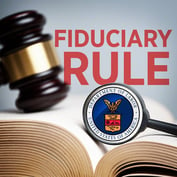NAIC OKs Part Of Proposed Producer Fee Disclosure
By
The National Association of Insurance Commissioners achieved its stated goal of adopting a producer compensation disclosure proposal before the end of 2004, opening the door for state lawmakers to consider the newly amended producer licensing model law in the new year.
The regulators, via a conference call of the NAIC Executive Committee/Plenary session on Dec. 29, approved by a vote of 31-15 the majority of a proposed compensation disclosure amendment to the existing producer licensing model act.
However, a section of the amendment draft to which the industry strongly objected was not adopted and will be sent back to the NAIC Executive Task Force on Broker Activities for further development and will be reexamined within 90 days.
“Our commitment always has been that we would try to get something moved out by the end of the year for the benefit of those states whose legislatures only meet for a limited period of time in the calendar year,” NAIC President and Pennsylvania Insurance Commissioner Diane Koken said during the conference call.
One industry representative expressed his support for the adopted measures, while adding that more work still needs to be done. “We think it addresses the abuses that have been identified. And it addresses the problems that NAIC was hoping to address,” said Ron Panneton, senior counsel for the National Association of Insurance and Financial Advisors, Falls Church, Va.
The NAIC described the new amendment as “a key component of an aggressive initiative” by state regulators to address issues regarding the producer compensation arrangements.
“This is an issue that we spent a great deal of time over the last several months debating and reviewing,” Koken told fellow regulators. “Weve made tremendous progress in developing language that addresses many of the concerns that have been identified. Its responsive to a great number of comments we received from many interested parties.”
The main section of the amendment proposal adopted by the NAIC is Section A of the draft. It proposes that a producer getting any compensation from the customer for placing insurance or representing the customer with respect to that placement, shouldnt accept any fee from an insureror other third partyfor that insurance placement unless the producer has, prior to the customers buying the insurance:
Obtained the customers documented acknowledgment that such compensation will be received by the producer or affiliate.
Disclosed the amount of compensation from the carrier or other third party for that placement. If the amount of compensation is not known at the time of disclosure, the producer should disclose the specific method for calculating such compensation and, if possible, a reasonable estimate of the amount.
The section clarifies, however, that this disclosure requirement will not apply to a producer who meets all of the following requirements:








 December 29, 2004 at 07:00 PM
December 29, 2004 at 07:00 PM









